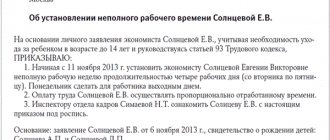What the calendar shows
Every year the Government of the Russian Federation approves the production calendar. It is used not only to clarify holidays and transfers. HR officers and accountants receive information from it about the average number of working hours per month in 2021 (or retrospectively, how many were worked).
When directly worked hours in days are important, you should check the production calendar to find out how many working days there are on average in a month. After all, for example, in January we will work 17 days, while in July and December - 23 each. And all because there are many holidays in January, and there are none at all in July. The number of days off (including postponed ones) is also taken into account when calculating.
2021 calendar for 5 day week
| 2020 | Days | Duration of work per week | ||||
| Calendar | Workers | Weekends and holidays | 40 hour | 36 hour | 24 hour | |
| January | 31 | 17 | 14 | 136 | 122.4 | 81.6 |
| February | 29 | 19 | 9 | 152 | 136.8 | 91.2 |
| March | 31 | 21 | 10 | 168 | 151.2 | 100.8 |
| April | 30 | 22 | 8 | 175 | 157.4 | 104.6 |
| May | 31 | 17 | 14 | 135 | 121.4 | 80.6 |
| June | 30 | 21 | 9 | 167 | 150.2 | 99.8 |
| July | 31 | 23 | 8 | 184 | 165.6 | 110.4 |
| August | 31 | 21 | 10 | 168 | 151.2 | 100.8 |
| September | 30 | 22 | 8 | 176 | 158.4 | 105.6 |
| October | 31 | 22 | 9 | 176 | 158.4 | 105.6 |
| November | 30 | 20 | 10 | 159 | 143 | 95 |
| December | 31 | 23 | 8 | 183 | 164.6 | 109.4 |
| 2020 | 366 | 248 | 118 | 1979 | 1780.6 | 1185.4 |
| Average monthly work hours | 164.9 | 148.4 | 98.8 | |||
What is often discussed when establishing irregular working hours?
One of the main characteristics of irregular work is the occasional involvement in work outside the shift. However, the legislator did not decipher this concept in detail. Which in turn leads to abuse on the part of the employer. In this regard, the existing uncertainty gives rise to controversy . And judicial practice regarding irregular working hours on the legality of frequent involvement in additional work is in favor of the employer .
rare for employees to be able to prove that they were systematically . In most cases, courts believe that after an employee has signed an employment contract indicating an irregular work schedule, he has given his consent to overtime. At the same time, by virtue of Art. 101 of the Labor Code of the Russian Federation, time of excess work cannot be recognized as overtime (see the appeal rulings of the Perm Regional Court dated 05/06/2013 in case No. 33-4113, the Moscow City Court dated 12/02/2019 in case No. 33-53734/2019). Employees also receive a refusal if around the clock (appeal ruling of the St. Petersburg City Court dated February 17, 2015 No. 33-3012/2015).
Workers often go to court to obtain monetary compensation for being forced to work in irregular hours. However, even in this case they usually fail (appeal ruling of the St. Petersburg City Court dated March 15, 2017 No. 33-5312/2017).
However, there are also opposite precedents when an employee manages to reclassify irregular work as overtime and receive monetary compensation for it (appeal ruling of the Investigative Committee for civil cases of the Kaliningrad Regional Court dated January 16, 2013 in case No. 33-88/2013).
Also, some employees believe that they have the right to demand compensation for additional leave upon dismissal , regardless of the fact that they were involved in excess work. Such claims often end in failure (appeal rulings of the Moscow City Court dated November 16, 2016 in case No. 33-42030/2016, Sverdlovsk Regional Court dated October 25, 2017 No. 33-18915/2017). Although there are decisions in favor of the employee (resolution of the Seventh Arbitration Court of Appeal dated 01.02.2016 No. 07AP-12378/2015 in case No. A45-15265/2015; appeal ruling of the St. Petersburg City Court dated 15.03.2017 No. 33-5312/2017).
is obliged to give additional leave during work, of the fact of involvement in excess work. there are no such clarifications regarding monetary compensation for additional rest time . Therefore, if an employer issues compensation for additional leave upon dismissal, based on the fact that he was involved in excess work, he runs the risk of ending up in court.
Read also
08.11.2020
How to calculate if the employee is a minor
It would seem that there is no difference: for teenagers, restrictions are set by hours, not by days. But we need to clarify: how many hours does a full working day mean? Children under 16 have the right to work, in accordance with Article 92 of the Labor Code of the Russian Federation, no more than 24 hours per week. But how will they be distributed? Various options are possible:
- 3 days for 8 hours;
- 4 days for 6 hours;
- 6 days for 4 hours.
The compilers of the production calendar were guided by a five-day week of 8 hours each and calculated the average monthly number of working days in 2021 with a 40-hour week.
In our case, if we take an eight-hour work day as a basis, the number of days is 3/5 of the usual “adult” norm. Therefore, we multiply the number of days in a month by 3/5.
So, for example, in September a 15-year-old worker has not 20 days worked, but 12.
It turns out that for the calculation we do not need to divide the working day into parts, but a kind of “adjustment” to the eight-hour period.
Preferential cases
Article 258 of the Labor Code of the Russian Federation notes cases of additional breaks for mothers with children under one and a half years old. This time, according to the code, can be distributed between the time of arrival and departure from work, time for lunch, depending on the interests of the mother and child. It turns out to be at least thirty minutes, every three hours. Payment occurs as standard. Working hours are reduced by law. In cases where there are two or more children of this age (twins), half an hour is added for each feeding.
A reduction in the working week is fixed for certain categories of workers, which is prescribed in the employment contract. For some categories of disabled people, women in late stages of pregnancy, official guardians of disabled people (based on an official medical report, or certificates issued by guardianship authorities, state social services) is mandatory.
Wages are based in these cases on the basis of actual hours worked, or the volume completed and the availability of the corresponding conclusions described earlier.
Weekly norm
In Art. 91 of the Labor Code of the Russian Federation specifies not only the concept of the working period. The point is that some more norms for the duration of this are prescribed here. So, for example, you can say exactly how much an employer has the right to load employees with work per week.
A total of 40 hours are allocated for this. This is the maximum amount each able-bodied citizen can work in a week. There are exceptions, but there are not so many of them. By the way, if you think about it, it’s not very difficult to distribute 40 hours over a week. Much depends directly on your schedule, but some norms in the Labor Code are also provided for in this regard.
It is also worth paying attention to the fact that every employer is required to keep records of the periods worked by each of its subordinates. Otherwise, the leader violates the laws of the country. And he can be held accountable.
Concept
In Art. 91 of the Labor Code of the Russian Federation reveals a concept that plays an important role for work. Namely, what is working time? Not everyone is fully aware of what is involved here. Therefore, before studying labor duration, you should understand what working time is.
This period represents the period of time during which the employee must perform his job duties, in accordance with the employment/collective agreement. It also includes other time provided for by Federal acts and laws, as well as the agreement between the employer and employee related to work time. This is the simple concept of working time.
We can say that this is simply a period in which you have to fulfill your duties. “Sitting at work,” as some employees in Russia say. Everything is very simple. A much more complex issue is the topic of the length of the working day.
Deviations from the norm
We already know the concept of working time. Moreover, it is no secret how much maximum work is allowed per week. Only, as already mentioned, there are sometimes some exceptions. Both in relation to the working day and in relation to the working week.
A reduced weekly schedule is provided for minor applicants. If a citizen is not yet 16 years old, then he can work 16 hours less per week than everyone else. After reaching this age level and up to adulthood, the norm will be 36 hours in 7 days. No more.
Normal working hours are reduced by 5 hours for disabled people of groups 1 and 2. In some cases, such employees, for medical reasons, are able to work less than is allowed (to the maximum). But the norm for disabled people per week is 35 hours.
Some personnel are employed in dangerous or hazardous work. The Labor Code also provides its own bonuses for them. Such employees are allowed to perform their job duties 4 hours less per week than ordinary employees. Their work week is limited to 36 hours.
Other citizens
The duration of the shift for some categories of employees is determined in a very interesting way. The thing is that sometimes it is the employer who dictates how much a subordinate must work per day. But at the same time, taking into account all the norms and peculiarities of the country’s legislation.
Thus, workers employed in the media sector, as well as film/theater associations, actors and other creative teams have working hours established by the labor/collective agreement. That is, their employer sets the maximum value for them. Or Federal regulations of the country. For some professions, the country itself dictates limits on the length of work per day. Please take this into account.
Above the norm
In some cases, you can legally work more than the required 40 hours. Either at the request of the employees or at the request of the employer. These two concepts are very different from each other.
In the first situation, we will be dealing with a part-time job. It cannot exceed 4 hours of additional labor per day, and 16 per week. With all this, the company’s activities should not cause any damage to your main place of work. A citizen can have as many part-time jobs as he wants, as long as it does not harm his main activity. The social package is provided in the same way as for all other employees.
But in the second case, overtime is called overtime work. In this case, you can work for two days in a row, but no more than 4 hours per day. And there is a certain limit of overtime work per year. It is currently 120 hours. Please note that such work is paid double. And part-time work is calculated according to the usual principles, without allowances.
In principle, this is all that can be said about the normal working day, as well as the peculiarities of working time. As a rule, you have to learn about your rights at work in advance. Indeed, in Russia, established schedules are often violated, and employees are left to work overtime without additional pay. The established principles are not that difficult to understand. We now know generally accepted standards regarding working hours. Remember, violation of these is unacceptable. You have every right to complain about an unscrupulous employer!










